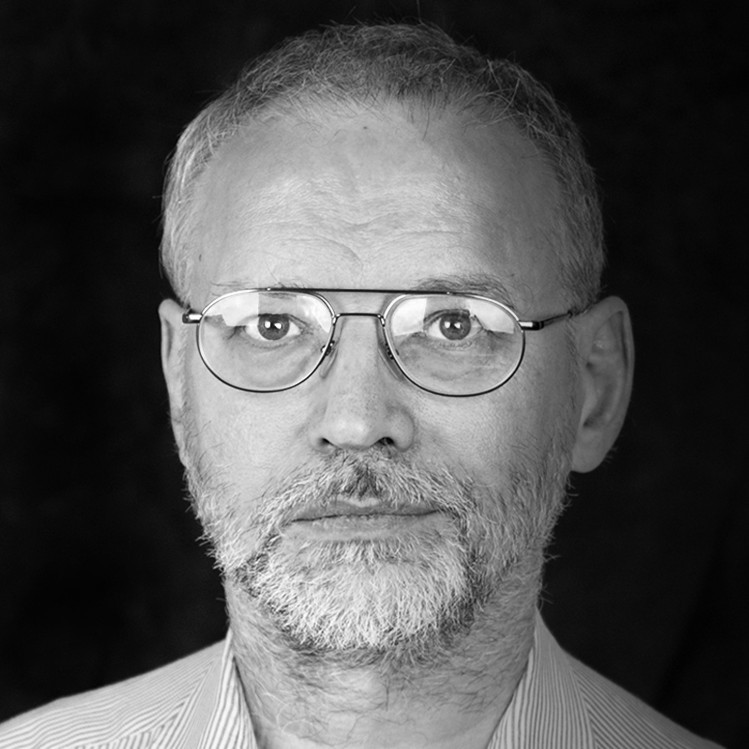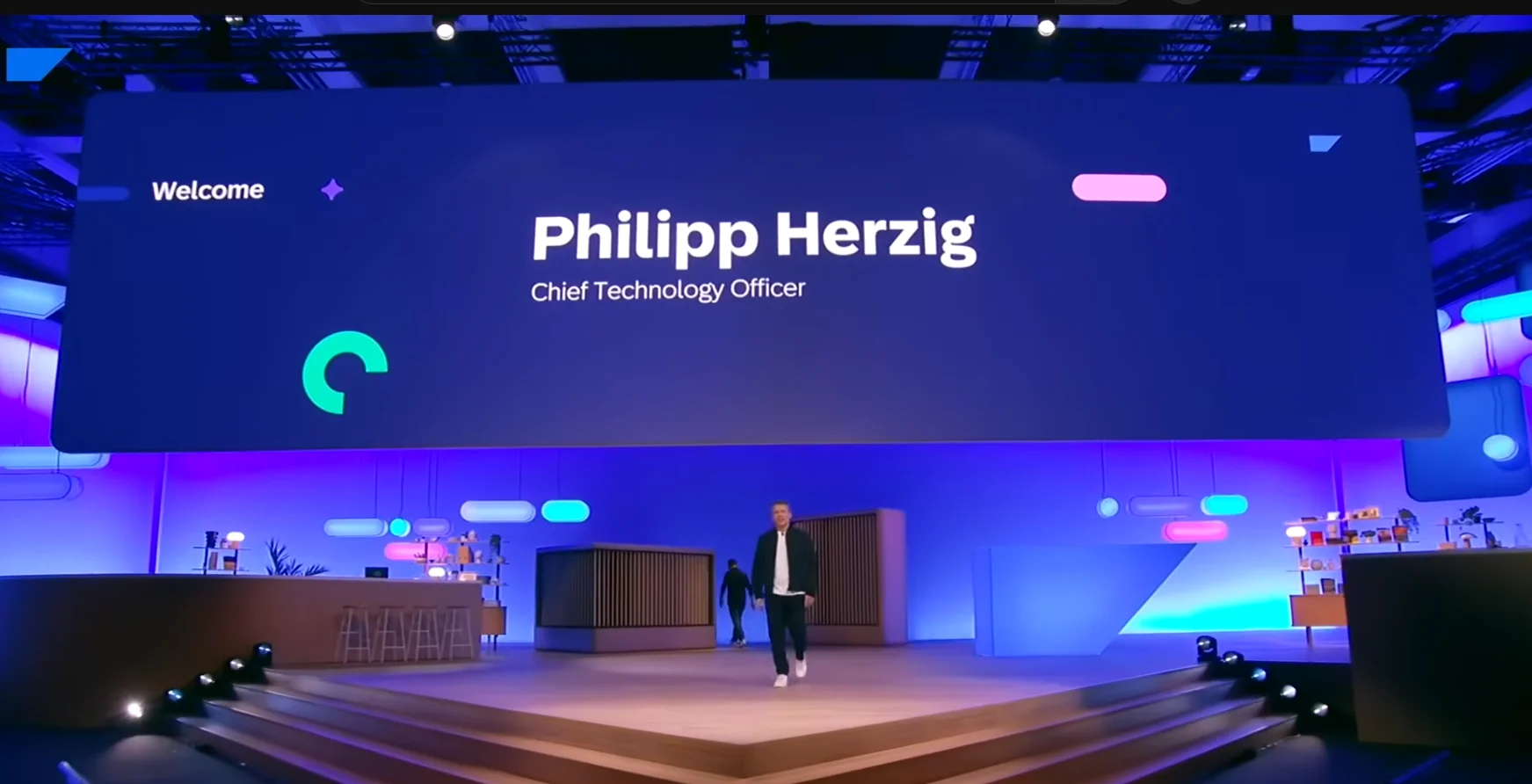| Auf der SAP TechEd 2025 in Berlin stellte der Softwarekonzern seine umfassende KI-Strategie vor. | SAP presented its comprehensive AI strategy at SAP TechEd 2025 in Berlin. |
| Über 3.000 Entwickler aus aller Welt versammelten sich Anfang November 2025 in Berlin zur SAP TechEd, der jährlichen Entwicklerkonferenz des Softwarekonzerns. In sechs Hallen des Messegeländes präsentierte SAP seine Vision einer KI-getriebenen Zukunft – mit konkreten Produkten, Partnerschaften und einer klaren Botschaft: Die Ära der agentischen KI hat begonnen.
Agentische KI im Mittelpunkt „Wir treten in eine neue Ära ein: die Ära der agentischen KI, in der KI nicht mehr nur ein Werkzeug ist, sondern zu Ihrem vertrauenswürdigen Teammitglied wird“, erklärte Muhammad Alam, SAP-Vorstand für Product & Engineering, in seiner Keynote. Gemeinsam mit CTO Philipp Herzig und Michael Ameling, Präsident der SAP Business Technology Platform, machte er deutlich: KI wird Entwickler nicht ersetzen, sondern zu „Architekten intelligenter, vernetzter Unternehmen“ befähigen. Die Zahlen unterstreichen SAPs Ambitionen: Bereits 20 KI-Agenten sind im Einsatz, bis Jahresende sollen es 40 werden. Diese können auf über 2.100 vorgefertigte Funktionen zurückgreifen. Insgesamt bietet SAP aktuell mehr als 300 eingebettete KI-Szenarien über alle Produktlinien hinweg – bis Ende 2025 sollen es 400 sein. Besonders beeindruckend sind die Effizienzgewinne in der Praxis: Ein KI-Agent für Rückstellungsberechnungen in SAP S/4HANA reduziert den Zeitaufwand um 80 Prozent, die Prüfungszeit um 50 Prozent. Im Einzelhandel und in der Fertigung, wo täglich hunderte Mitarbeiter Waren klassifizieren müssen, können Agenten den Prozess erheblich beschleunigen. Daten als Fundament Die technologische Basis für diese KI-Revolution bildet die SAP Business Technology Platform (BTP). Ameling betonte die zentrale Rolle von Daten: „KI ist nichts ohne gut organisierte Daten.“ Mit SAP HANA Cloud bietet das Unternehmen eine multimodale Datenbank, die verschiedene Datentypen – von strukturierten Tabellen über räumliche Daten bis zu Vektoreinbettungen – in einer Engine vereint. Eine bedeutende Ankündigung war die Partnerschaft mit Snowflake. SAP Kunden erhalten damit Zugang zu den vollständigen Daten- und KI-Funktionen von Snowflake als Lösungserweiterung für die SAP Business Data Cloud. Dies ergänzt die bereits im Februar angekündigte Integration mit Databricks und bietet Unternehmen maximale Flexibilität bei der Wahl ihrer Daten- und KI-Workloads. Eigenes Foundation Model für Geschäftsdaten Ein Highlight war die Vorstellung von SAP RPT-1 (Rapid One), dem ersten Foundation Model speziell für strukturierte Geschäftsdaten. Das „relational pretrained transformer“ Modell löst ein zentrales Problem: Bisher mussten für verschiedene Vorhersageaufgaben jeweils separate Machine-Learning-Modelle trainiert werden. RPT-1 benötigt dagegen nur eine kleine Datenmenge zum Lernen und liefert dabei höhere Genauigkeit als herkömmliche Ansätze. Herzig erklärte: „Wir glauben, dass SAP RPT-1 das leistungsfähigste prädiktive Foundation Model ist, das es derzeit gibt.“ Das Modell ist bereits auf GitHub und Hugging Face verfügbar und hat nach Unternehmensangaben bereits über 3.000 Downloads verzeichnet. Entwickler im Fokus SAP setzt auf eine offene Plattform-Strategie. Entwickler können direkt mit gängigen Tools wie VS Code, Windsurf, Cursor oder Claude Code arbeiten. Der KI-Assistent Joule for Developers soll die Produktivität um 30 Prozent steigern und die Bereitstellungsgeschwindigkeit verdreifachen. In der „Developer Garage“ konnten Konferenzteilnehmer praktisch mit KI-Agenten experimentieren. Jonathan von Rüden, Head of AI Frontrunner Innovation bei SAP Business AI, berichtete von positivem Kundenfeedback: „Jeder versteht die Reichweite und die Ersparnisse. Alle machen nach ersten Piloten weiter.“ Souveräne KI-Infrastruktur für Europa Über die Produktankündigungen hinaus präsentierte SAP-CEO Christian Klein eine strategische Partnerschaft mit der Deutschen Telekom. Gemeinsam entsteht die „Industrial AI Cloud“ – eine souveräne KI-Infrastruktur mit über 1.000 NVIDIA DGX B200-Systemen und bis zu 10.000 Blackwell-GPUs in München. Die Telekom stellt die physische Infrastruktur bereit, SAP liefert die Business Technology Platform und Anwendungen. Klein betonte: „Deutschland und Europa bringen alle Voraussetzungen mit, um im globalen Wettbewerb um industrielle KI eine führende Rolle einzunehmen.“ Die Infrastruktur soll im ersten Quartal 2026 in Betrieb gehen und Unternehmen jeder Größe ermöglichen, KI-Anwendungen über eine sichere, europäische Infrastruktur zu entwickeln und einzusetzen. Ausblick Mit Ankündigungen zu Quantencomputing und physischer KI – etwa Robotern, die durch SAP-Software gesteuert werden – zeigte das Unternehmen, dass die Transformation erst am Anfang steht. Die SAP TechEd 2025 machte deutlich: Der Softwarekonzern positioniert sich als umfassende Plattform für die KI-getriebene Unternehmenswelt – mit dem Anspruch, Entwickler zu befähigen, nicht zu ersetzen. |
More than 3,000 developers from around the world gathered in Berlin in early November 2025 for SAP TechEd, the software company’s annual developer conference. In six halls of the exhibition center, SAP presented its vision of an AI-driven future – with concrete products, partnerships, and a clear message: The era of agentic AI has begun.
Agentic AI takes center stage “We are entering a new era: the era of agentic AI, in which AI is no longer just a tool, but becomes your trusted team member,” explained Muhammad Alam, SAP Executive Board Member for Product & Engineering, in his keynote speech. Together with CTO Philipp Herzig and Michael Ameling, president of SAP Business Technology Platform, he made it clear that AI will not replace developers, but will empower them to become “architects of intelligent, connected enterprises.” The figures underscore SAP’s ambitions: 20 AI agents are already in use, and that number is expected to rise to 40 by the end of the year. These agents can draw on more than 2,100 prebuilt functions. In total, SAP currently offers more than 300 embedded AI scenarios across all product lines – and that number is expected to rise to 400 by the end of 2025. The efficiency gains in practice are particularly impressive: An AI agent for provision calculations in SAP S/4HANA reduces the time required by 80 percent and the review time by 50 percent. In retail and manufacturing, where hundreds of employees have to classify goods every day, agents can significantly speed up the process. Data as the foundation The SAP Business Technology Platform (BTP) forms the technological basis for this AI revolution. Ameling emphasized the central role of data: “AI is nothing without well-organized data.” With SAP HANA Cloud, the company offers a multimodal database that combines different data types – from structured tables to spatial data to vector embeddings – in a single engine. A significant announcement was the partnership with Snowflake. This gives SAP customers access to Snowflake’s full data and AI capabilities as a solution extension for the SAP Business Data Cloud. This complements the integration with Databricks announced in February and offers companies maximum flexibility in choosing their data and AI workloads. Proprietary foundation model for business data One highlight was the introduction of SAP RPT-1 (Rapid One), the first foundation model specifically designed for structured business data. The “relational pretrained transformer” model solves a key problem: Until now, separate machine learning models had to be trained for different prediction tasks. RPT-1, on the other hand, requires only a small amount of data for learning and delivers higher accuracy than conventional approaches. Herzig explained: “We believe that SAP RPT-1 is the most powerful predictive foundation model currently available.” The model is already available on GitHub and Hugging Face and, according to the company, has already been downloaded over 3,000 times. Focus on developers SAP is committed to an open platform strategy. Developers can work directly with popular tools such as VS Code, Windsurf, Cursor, and Claude Code. The AI assistant Joule for Developers is designed to increase productivity by 30 percent and triple deployment speed. In the “Developer Garage,” conference participants were able to experiment with AI agents in a hands-on setting. Jonathan von Rüden, Head of AI Frontrunner Innovation at SAP Business AI, reported positive customer feedback: “Everyone understands the reach and the savings. Everyone is continuing after initial pilots.” Sovereign AI infrastructure for Europe Beyond the product announcements, SAP CEO Christian Klein presented a strategic partnership with Deutsche Telekom. Together, they are creating the “Industrial AI Cloud” – a sovereign AI infrastructure with over 1,000 NVIDIA DGX B200 systems and up to 10,000 Blackwell GPUs in Munich. Telekom is providing the physical infrastructure, while SAP is supplying the Business Technology Platform and applications. Klein emphasized: “Germany and Europe have everything it takes to play a leading role in the global competition for industrial AI.” The infrastructure is scheduled to go live in the first quarter of 2026 and will enable companies of all sizes to develop and deploy AI applications via a secure, European infrastructure. Outlook With announcements about quantum computing and physical AI—such as robots controlled by SAP software—the company showed that the transformation is only just beginning. SAP TechEd 2025 made it clear that the software company is positioning itself as a comprehensive platform for the AI-driven business world—with the aim of empowering developers, not replacing them. |

Dr. Jakob Jung ist Chefredakteur Security Storage und Channel Germany. Er ist seit mehr als 20 Jahren im IT-Journalismus tätig. Zu seinen beruflichen Stationen gehören Computer Reseller News, Heise Resale, Informationweek, Techtarget (Storage und Datacenter) sowie ChannelBiz. Darüber hinaus ist er für zahlreiche IT-Publikationen freiberuflich tätig, darunter Computerwoche, Channelpartner, IT-Business, Storage-Insider und ZDnet. Seine Themenschwerpunkte sind Channel, Storage, Security, Datacenter, ERP und CRM.
Dr. Jakob Jung is Editor-in-Chief of Security Storage and Channel Germany. He has been working in IT journalism for more than 20 years. His career includes Computer Reseller News, Heise Resale, Informationweek, Techtarget (storage and data center) and ChannelBiz. He also freelances for numerous IT publications, including Computerwoche, Channelpartner, IT-Business, Storage-Insider and ZDnet. His main topics are channel, storage, security, data center, ERP and CRM.
Kontakt – Contact via Mail: jakob.jung@security-storage-und-channel-germany.de
